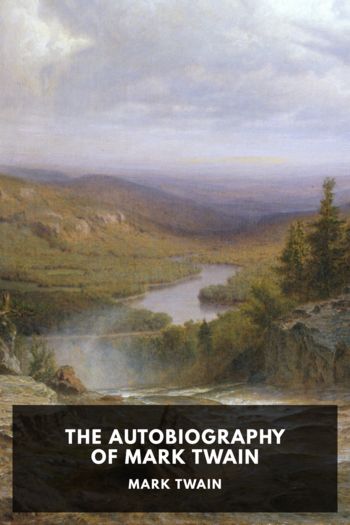Godzilla vs. Kong, Greg Keyes [korean novels in english .txt] 📗

- Author: Greg Keyes
Book online «Godzilla vs. Kong, Greg Keyes [korean novels in english .txt] 📗». Author Greg Keyes
Nathan’s mind had already shifted into overdrive, something that hadn’t happened in a long time. He had theorized on an energy source in Hollow Earth, but it had not been the point of the expedition Dave had spearheaded. That had been pure science, a voyage of discovery.
But he could work with this. If Simmons’s objective was to find the energy source, that was okay. It was still a path that led to Hollow Earth, to everything he and Dave had been trying to accomplish. But it did present a bit of a problem—they would have to find it. And it wasn’t likely to be obvious to human senses or to the machines that they had created to enhance those senses.
A green plant, an anole lizard—most life on Earth had evolved to perceive the presence of the sun, to react to it. A plant bent toward the light, trying to maximize the energy it could draw from it. An anole warmed its blood in the sun, moved to shade when it was too hot, buried itself and hibernated when the luminary’s warmth was no longer enough to power it. Nocturnal animals reacted negatively to the sun, staying hidden when it was out, emerging when darkness came. But, as the surface world’s chief source of power, the sun was salient, and living things recognized that.
Even if you could not perceive the sun, you could use a sunflower to find where it was; the sunflower would turn toward it.
By that logic, what would turn toward the power source of Hollow Earth?
Nathan stood, walked over to a pile of papers and magazines, and dug out his copy of A Scientific Future magazine and the cover article “Kong: Genetic Memory and Species Origins” by Dr. Ilene Andrews.
“I have an idea,” he told Simmons. “But it’s crazy.”
“Love it!” Simmons said. “Crazy ideas made me rich.”
Nathan waved the magazine. “Are you guys familiar with the concept of genetic memory? It’s the theory that all Titans share an impulse to return to their evolutionary source.”
“Like spawning salmon,” Serizawa said.
“Exactly,” Nathan said. “Or a homing pigeon.” He pointed at the holographic globe. “So if this is the Titans’ home, and this … life force sustains them—”
“A Titan could show you the way to the energy source,” Serizawa said.
“Yes,” Nathan agreed. “With a little help from an old colleague.”
Skull Island
Ilene hadn’t seen Nathan Lind in almost a year. Back then, he had been sincere, energetic, charming in a clueless sort of way. He had come to Skull Island pursuing the same leprechaun that Houston Brooks and a half-dozen other scientists had come for in the last fifty years—a path from Skull Island to Hollow Earth. She had been caught up in it herself at the time; Iwi mythology suggested that much of the life of the island—including most of the people themselves—had come up from some ancient, mythic underworld. The biological reality of the island seemed to confirm the mythology. If you looked at a continent like Australia, which broke off from Pangaea before the dinosaurs became extinct, you could see that tens of millions of years of isolation had encouraged life to diverge quite radically from the rest of the world; marsupials dominated the megafauna instead of the placental mammals that ruled the other continents, for instance. Monotremes, egg-laying mammals once found everywhere, had survived and continued to evolve in Australia and New Guinea, but nowhere else, exemplified by that weirdest of creatures, the duck-billed platypus.
Biologists and geographers recognized a famous demarcation called the Wallace Line, separating Borneo and everything west of it from Sulawesi, New Guinea, and Australia—all of which had once been a part of or very near a Greater Australian continent known as Sahul that was now partly submerged. East of the Wallace Line was like an alternate universe, an alternative Earth. A place where things evolved differently. And yet, the genetic roots of everything in Australia could be found, both in the fossil record and in living species, on other continents, most notably South America and Antarctica, to which Sahul had been most recently connected.
You could trace a similar line around Skull Island. Call it the Lin Line, after the scientist who first formally described much of the island’s flora and fauna. But if the Wallace line seemed to mark a border between what was “normal” in most of the world and the weirdness that was Australia, the plants and animals of Skull Island were a whole different degree of strange. Some looked like odd, often gigantic versions of more widely known animals, but in most cases, these seemed to be cases of convergent evolution, superficial resemblance based on similar adaptations—the way that marsupial moles and placental moles resembled one another, although a placental mole was far more closely related to a whale or a giraffe than to any marsupial. Similarly, though a Skull Island leafwing might superficially resemble a bird, it most decidedly was not.
And unlike the fauna of Australia, it was sometimes difficult to find any close or even very distant relatives on other continents. Skullcrawlers were an excellent example. Genetic analysis suggested that they split off from the amniote line that led to modern reptiles, birds, and mammals before those groups diverged from one another. Yet besides that very distant reptiliomorph heritage, there were no other fossil or living relatives of the Skullcrawler lineage known from anywhere else on Earth. So how and where had they evolved?
One obvious answer, the one Ilene herself favored, was to take the Iwi at their word: they had come from beneath, along with the other animal and plant inhabitants of the island. Isolated, Skull Island had made its own, divergent way. Skull Island, she had famously claimed, was like the Hollow Earth brought to the surface.
When they discovered what was to be charmingly called the “Vile





Comments (0)